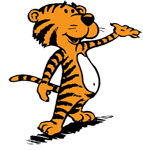1st Grade Newsletter
May 16, 2022


Language Arts
What are we learning?
Critical Literacy - Reading
Critical Literacy: Critical readers understand that texts are not neutral. When engaging in a critical literacy framework, readers take an active role and do not accept messages at “face value.” From this perspective, readers examine, analyze, and evaluate the underlying ideas in texts, asking questions such as “What’s the author’s perspective?” or “What do I believe about this?”


Home/School Connection
- Questions for discussing text with your child:
- Whose experiences and what kinds of experiences are given a privileged voice in the text?
- What cultural and ideological assumptions (discourses) support the text?
- What assumptions about gender roles or relationships, social class, age, social customs, or cultural identities are implicit in the text?
- Are the cultural and ideological assumptions on which the text is based consistent or are there traces of conflicting discourses?
- How are the cultural and ideological assumptions constructed through the text’s use of language, literary devices, and writing strategies?
- What alternative cultural and ideological assumptions have been left out or silenced in the text?
- How has the text been shaped by the cultural context in which it was produced?
- How does the text position the reader to accept its cultural and ideological assumptions?


Math
What are we learning?
- We are wrapping up our money unit.
- Learning the names and values of coins as a child is much like learning the names of anything else in our society. Through repeated exposure and experiences with coins, students begin to remember the coin names and values. If students are not yet familiar with the coins, they should be given time to examine and explore attributes of the individual coins.
- Upcoming - Measurement:
Time - hour hand and minute hand and telling time by the hour and minute (digital and analog).
Calendar - Students need to understand how to use the calendar as a tool to measure time.
Big Ideas in Measurement - A measurement is a number that indicates a comparison between the attribute of the object being measured and the same attribute of a given unit of measure. In first grade, students spend time with Step 2: Using Models of Measuring Units (using nonstandard units).
Estimation - making reasonable estimates of differing amounts.
Measuring Length - . In first grade, they continue to explore linear measurement. They learn that length, width, and height are all measurements of length. They also begin to understand how physically matching or making comparisons of length with nonstandard units produces a number known as a “measure.”
Discrete vs. Interval Counting - Measuring length with nonstandard units is slightly different from just counting objects. When counting objects, each number that is said refers to one discrete object, but when counting units being used to measure length, each count refers to an interval of length (i.e., an amount of space).
Weight - After students have compared the weight of two objects using their hands or arms, they can use a balance scale to compare the weight of two objects. Students can place one object on one side of the balance and another object on the other side of the balance.
Volume - Students can start exploring volume by directly comparing the capacities of two containers. Pour the contents of one container into another. If the first container’s contents do not fill the comparison container, the second container holds more. If the first container’s contents overflow the comparison container, the second container holds less
Home/School Connection
- Money At home: Grab a handful of coins. Ask your child what is the name of each coin? What value does each coin have? Count the value of all the coins together.
- Measurement at home: Have the student practice telling you time using digit and/or analog clocks.
- Have students measure objects using non-standard units and standard units of measurement.
- Have students use a measuring cup to fill larger objects and count how many measuring cups it took to fill the larger objects.
- Have students pick up different objects and discuss heavy/lighter concepts.
Science
What are we learning?
- Natural Resources in our parks - Students identify natural resources that can be found in the parks and describe how these natural resources could be used by both people and other animals and plants in the park.
- Will there be enough? - Students play a game by searching for natural resources as they listen to a story about cardinal needs as their environment changes. They predict what might happen if natural resources are used up.
Home/School Connection
- Talk about natural resources and how people and animals use them.
- Talk about the importance of using natural resources responsibly.
Social Studies
What are we learning?
- Geography - Where people live affects how they live.
- Geographic features may impact daily life for people around the world (food, clothing, shelter).
- Using maps and directions
Home/School Connection
- Questions to talk about geography:
- Where people live affects how they live.
- Geographic features may impact daily life for people around the world (food, clothing, shelter).
- Have your child practice reading and creating maps.
Important Dates & Reminders
- Friday, May 20, 2022 - Terraset’s Outdoor Movie Night (Doors open at 6:30 p.m. and movie starts at 8:00 p.m.)
- Friday, May 27 - Thursday, June 2 - Scholastic Book Fair
- Monday, May 30, 2022 - Memorial Day (No School)
- Friday, June 10, 2022 - Last Day of School (2 hour early release)
- First Graders will continue to participate in the A-Z countdown calendar.
Continuing Forward...
First graders have made a tremendous amount of growth following the virtual pandemic school year. Please help us keep this growth going over the summer. Take the time to participate in library summer reading programs. Also curl up as often as possible with a good book and read and talk about books with your children. Also encourage them to find ways to do everyday math, science, and social studies activities. Great opportunities for all of these can be found on Terraset’s Student Link page which will still be available to students over the summer.

